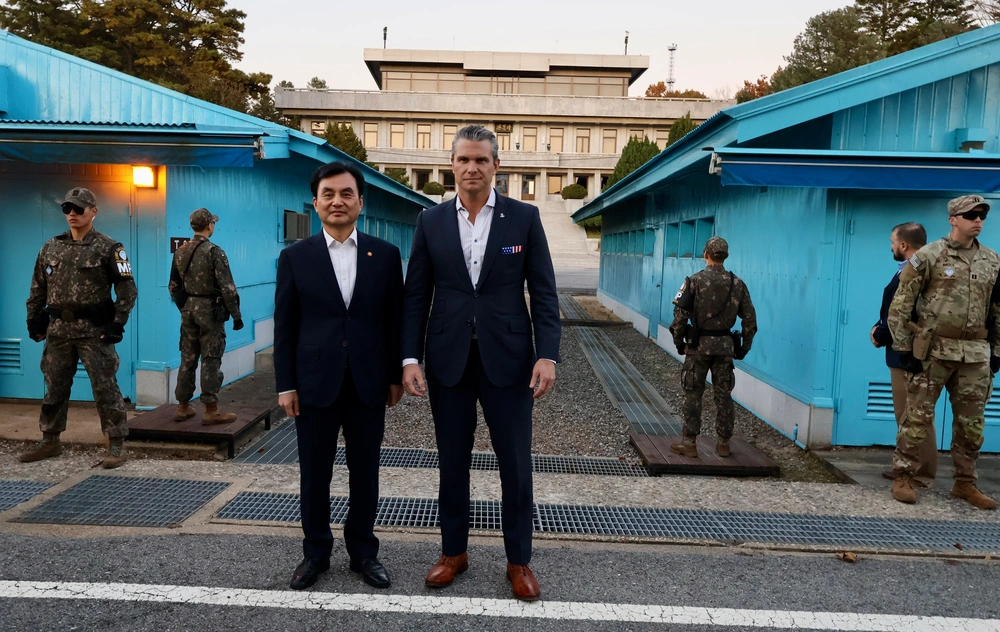Already a subscriber? Make sure to log into your account before viewing this content. You can access your account by hitting the “login” button on the top right corner. Still unable to see the content after signing in? Make sure your card on file is up-to-date.
Secretary of Defense Pete Hegseth has praised South Korea’s move to increase defense spending and indicated that the US may grant greater operational flexibility to American forces stationed in the country to address broader regional threats.
Getting into it: Hegseth’s praise came as he visited the Demilitarized Zone (DMZ) that separates North and South Korea.Standing alongside South Korean Defense Minister Ahn Gyu-back, Hegseth noted that while deterring North Korean aggression remains the core mission of US forces in South Korea, “flexibility for regional contingencies is something we would take a look at,” and suggested there could be a potential shift in strategy that could see American troops contributing to broader Indo-Pacific stability, including in the Taiwan Strait or South China Sea.

This comes as South Korea has increased its defense spending, which Hegseth described as a major step toward enabling the country to lead its own deterrence. The proposed 8.2% defense budget increase (South Korea’s largest in six years) will raise military spending to approximately $46 billion in 2026. The funding is aimed at modernizing the nation’s capabilities, including developing autonomous drones, precision-guided missiles, and expanding missile defense systems.
Notably, Hegseth’s trip to the DMZ came as South Korea’s Joint Chiefs of Staff reported that North Korea test-fired approximately 10 rounds of artillery into its western waters (both on the day of Hegseth’s arrival and two days prior).
There’s been no comment from North Korea.







